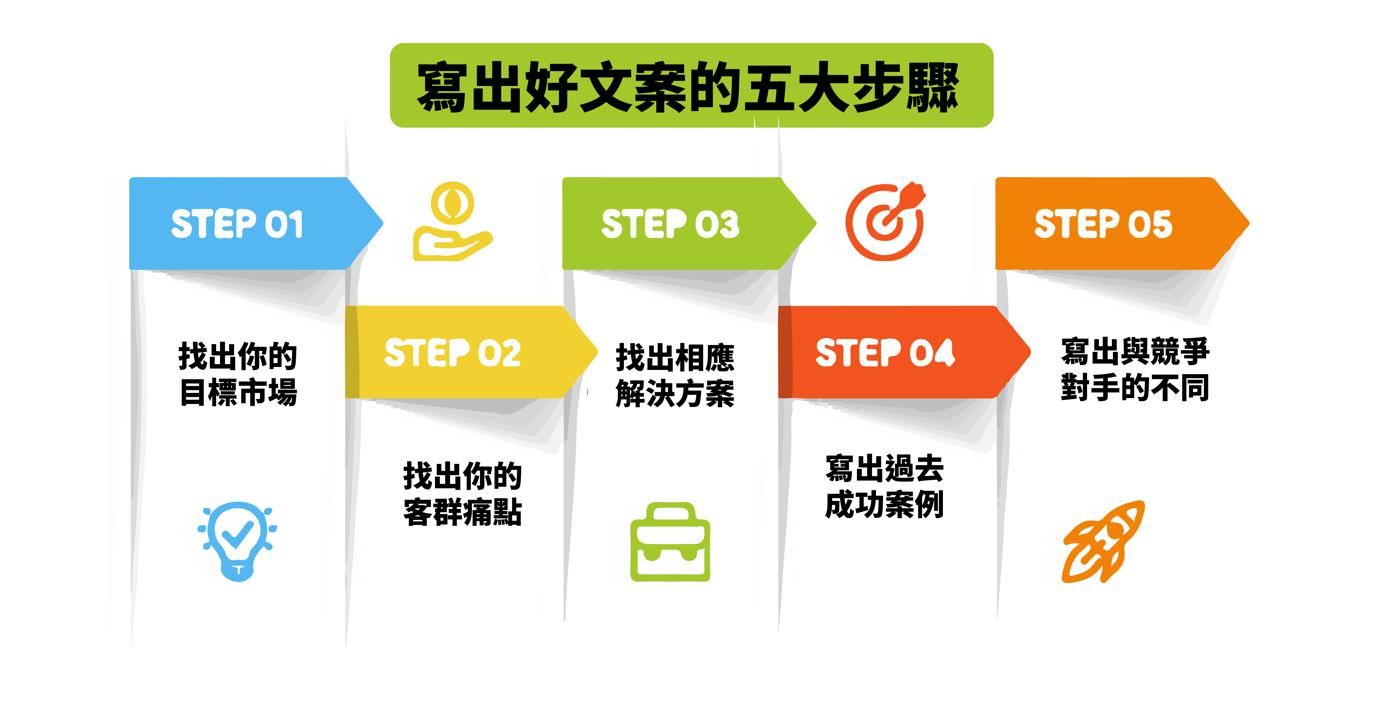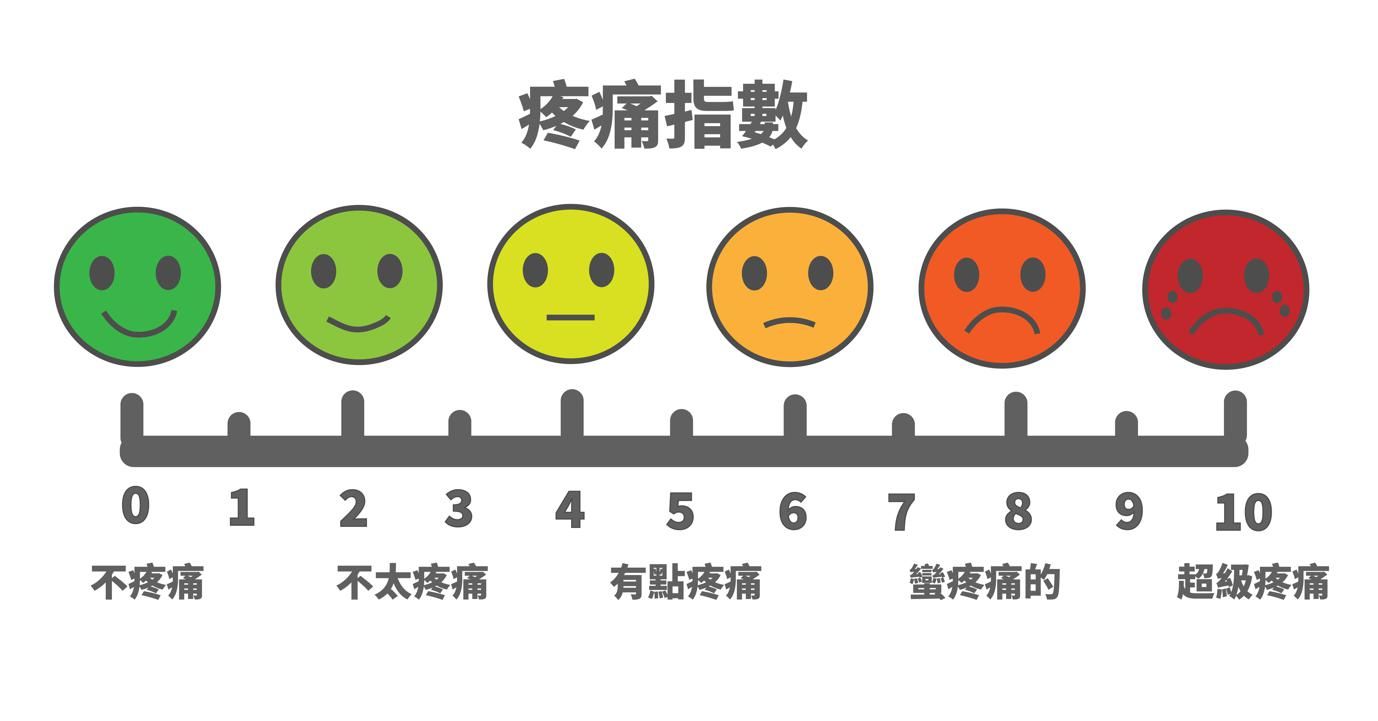Marketing Copy Series | Five Simple Steps to Writing a Successful Marketing Copy
What elements does a good marketing ad copy need to show? Is it the brand slogan, the awards won, the achievements in the industry, or the vision of the brand? Let's explore together!

What is a good marketing message? Some people think it is a brand slogan; some people think that it is necessary to list all the awards the brand has won; some people think that it is necessary to put their achievements in the industry; and some people think that it is necessary to write the vision of the brand. In fact, the best marketing ad copy isn't any of the above.
What is good marketing ad copy?
A good ad copy is one that grabs your target audience's attention right away, tells them how you're going to solve their problems ; tells them why they should trust you ; tells them why they should choose your brand over your many competitors opponent.
A good marketing copy should be able to directly touch the pain points of customers and arouse their emotions, as if you are directly talking to him one-on-one, as if your copy was specially designed for him.
Good marketing copy has many characteristics, including:
- lighthearted tone
- Straight to the point
- No need to explain too much
- Stand on the customer's side
- make you smile
- Use language close to life
- Use original content
If you want to know more about the characteristics of good marketing ad copy, you can read the article 7 characteristics of marketing ad copy .
Five Steps to Writing Great Marketing Ad Copy

1. Find your target market
Ask yourself, "Who are my clients?"
I just said that a good copy should resonate with customers. The first step in doing this is knowing who your customers are. In fact, "knowing who your customers are" can be seen in almost all of Harry Bear's marketing articles, and it can be said to be the most important point in marketing.
- 74% of customers find unified website content annoying (Infosys)
- 63% of customers find unified advertising messages "extremely annoying" (Marketo)
- 63% of customers say they connect better with brands that are personally valuable, interesting or relevant (Rapt Media)
If you have not yet formulated your brand's "customer persona", it is recommended to complete this step slowly before doing any marketing activities or formulating the direction of marketing strategy, because all the energy you spend on marketing will be lost. The wrong marketing directions you do because you don't know your customers are swallowed up. Real customer profiles can be used to see the characteristics of selected markets, including:
- Background information (gender, age, personality)
- Target
- difficulty
- like
- dislike
- Buyer shopping experience
- Estimated customer lifetime value

Note that there are usually at least two distinct markets for a product.
Next, we will use Harry Bear as an example. Harry Bear is an online service marketplace that provides many professional business services as well as many interesting and fun services. Suppose our target market can be divided into three categories: "Small Business", "Student", "Entrepreneur", then we can make different profiles for these three different market categories, their respective characteristics, age groups, Economic ability, lifestyle, etc.
2. Find the pain points of the target audience
Ask yourself, "What problems do my target audience have, and how do those problems make them feel?"
There is an old saying: "Customers won't pay attention to you unless he thinks you value them." So when writing copy, the most important thing is to keep the customer's needs in mind. To convince them to buy your product, you first need to fully understand why your product is the best for them.
The best way to find out this "WHY" is to find your customer's pain point and think about how your product can help them solve their problem.

A customer pain point refers to a specific problem that a customer is experiencing. Pain points can generally be divided into four categories:
- Financial pain points: Customers are spending too much on existing solutions
- Efficiency pain point: Customers spend too much time on existing solutions
- Process pain points: customers want to improve the process, such as converting more potential customers into actual customers
- Support Pain Points: Customers not receiving appropriate support at critical steps
Pain points are usually identified in two ways:
- Qualitative research: Listening directly to the needs of the customer, perhaps in direct one-on-one conversations or in focus group discussions.
- Quantitative research: Looking directly at numbers, you can use questionnaires to allow customers to give points directly in the form of scores, or look at changes in revenue, budget allocation, etc.
Going back to our Harry Bear example, we can target three different customer groups and find their different pain points, for example:
- Unable to find quality outsourcers
- Unable to determine whether the outsourced object can deliver on time
- Unfamiliar outsourced objects are not guaranteed
- price opaque
- Cumbersome communication process
And you have to solve your solution for each point, for example:
- There is an evaluation mechanism on Harry Bear, you can see past performance.
- The Harry Bear has an estimated delivery date on it, and there is a penalty mechanism for sellers who are disputed for not delivering on time.
- Harry Bear adopts the mechanism of payment after receipt, and also has an arbitration mechanism to make corresponding supporting measures in the event of disputes.
- All Harry Bear prices and services are clearly listed.
- Harry Bear's "service commodification" mechanism minus the communication process between the offender and the receiver.
3. Find solutions to market problems
Ask yourself, "What is my solution to this market problem?"

Now that you know the customer's problem, it's time to prescribe the right medicine. List all the advantages of your product, then filter out the one or two advantages that your customers care about the most, and clearly write out what kind of problems these advantages can solve and why. Remember, a good marketing copy doesn't have too many topics that can easily overwhelm the message. So just focus on the most important one or two strengths, and let the entire copy extend around these two strengths.
It is important to note that each different customer group will have different needs, so you will need to plan different marketing messages for your customer group.
Take Harry Bear as an example, Harry Bear's website may have many advantages for those who want to buy services, such as: transaction guarantee, dispute resolution mechanism, high-quality service provider, simple purchase interface, transparent price, creativity Diversified service types, etc. But if Harry Bear's customer group is "small businesses", then the most important thing may be "high-quality service providers"; if the customer group targeted today is "college students", then the main feature will become "creative" Diverse Service Types".
When writing a copy, you want a very simple, clear and eye-catching title, for example, a title for small businesses, it may be - "an outsourcing platform that increases outsourcing efficiency by 22%", the key is to be concise Strong and powerful , it will keep buyers interested in learning more.
4. Write how you solved problems for others in the same situation
Ask yourself, "How effective is my solution?"

It's not enough to tell someone you have a solution, you must also prove that your solution works. You can spend the whole day telling them how you solved their problems, and they will still doubt you, no matter how hard you try. So the best way is to list other customers who have similar problems and how you can help those customers solve their problems. For example, give the evaluation of existing or past customers, use experience and so on.
Back to the example of the Harry Bear platform, at this time, the platform can take out the past cases! The Harry Bear platform has helped "XX Restaurant", "XX Unit", and "XX Enterprise" to complete many orders, and the evaluations are very good, and they can even post real comments on the discussion board. There will be more peace of mind. After all, customers pay more attention to the evaluation of others and the actual use experience than the direct publicity of the company.
5. List how you are different from your competitors
Ask yourself, "How am I different from everyone else?"

Where are your strengths? Why choose you and not someone else? Suppose you are a supermarket. If you focus on "cheap", it may not be very attractive. After all, most supermarkets use the same feature as "cheap". Maybe you can use novel topics to create differentiation, such as "The freshest seafood ingredients in Taipei" and so on.
And what about Harry Bear? For the customer group of "business owners" just now, we have selected "high-quality service providers". What is the difference between them and other platforms such as 104 and 518? Harry Bear has a transparent "evaluation mechanism", as well as a seller service guidance mechanism, as well as a seller grading system to distinguish high-quality sellers, experienced sellers, etc., so that customers can make choices more clearly and transparently.
Okay, do you remember these five steps? Finally, when writing copywriting, don’t forget that in addition to complying with the seven characteristics of good marketing advertising copywriting , you should also make good use of the marketing techniques of “credibility”, “emotion” and “logic”. Amazingly well written copy!
Like my work? Don't forget to support and clap, let me know that you are with me on the road of creation. Keep this enthusiasm together!

- Author
- More